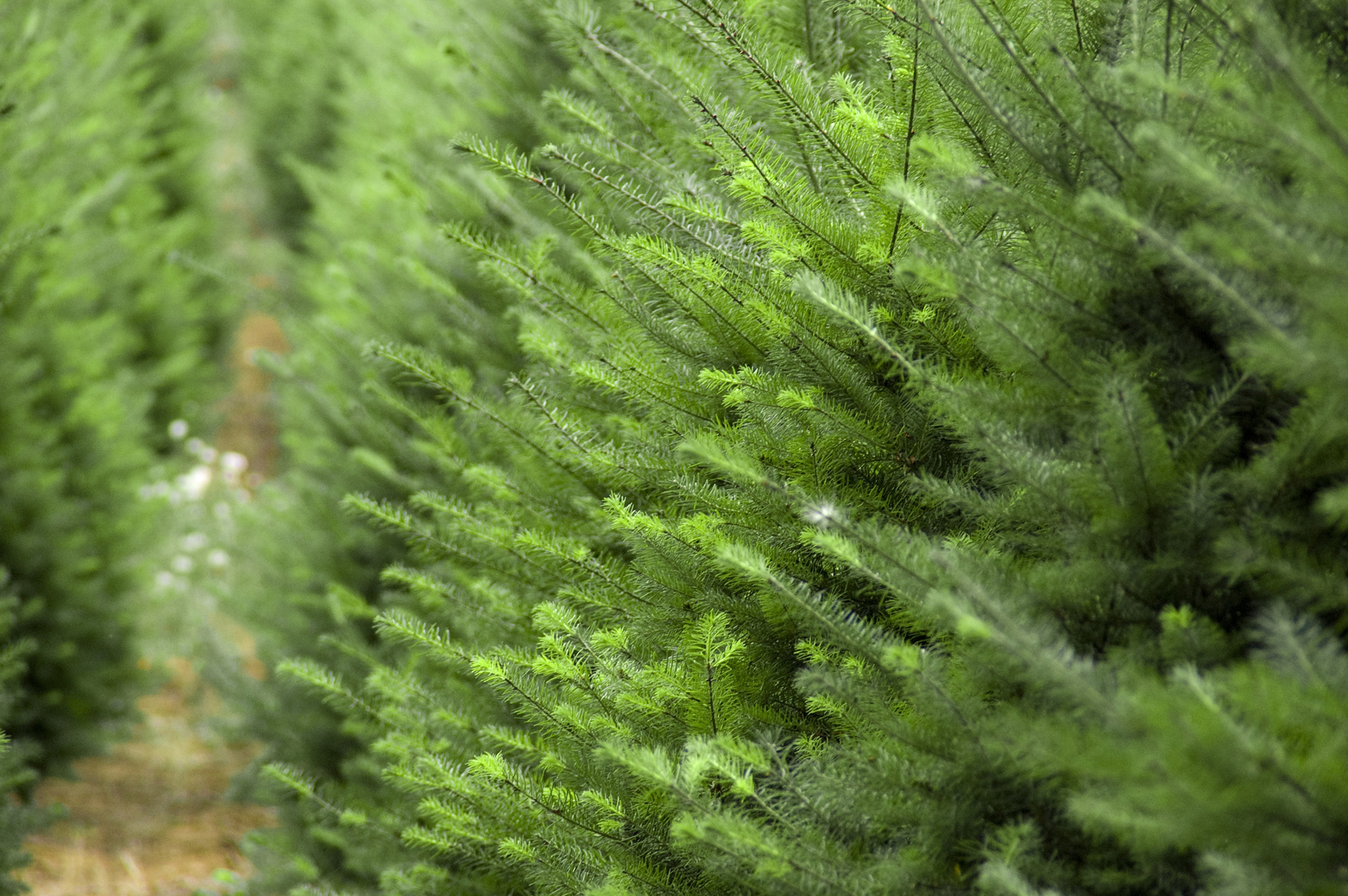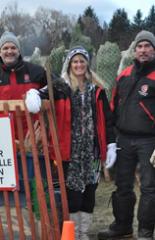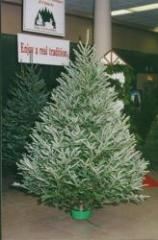
The Environmental Choice - Real Christmas Trees



The following articles explain how to select a Christmas tree, either cut or potted, and how to care for it. Below, you can download and print a PDF version of each article.
A few simple procedures can make the selection of a fresh, real Christmas tree easier:
1. Determine where in your home you will display your tree. With this in mind, you will be able to tell how tall a tree you will need and whether all four sides must be suitable for display.
2. Freshness is an important key when selecting your tree. The needles should be resilient. Take hold of a branch about six inches from the tip, between thumb and forefinger. Pull your hand toward you allowing the branch to slip through your fingers. Needles should adhere to the branch and not fall off in your hand.
3. Bend a needle between your forefinger and thumb. The needle should form a "U" without breaking unless the tree is frozen.
4. Lift the tree a couple of inches off the ground, then bring it down abruptly on the stump end. Older outside needles should not fall in substantial numbers. (Inside needles shed naturally every year).
5. The tree should have a fragrance and a good green colour.
6. A fresh tree will retain its moisture content and thereby keep its fragrance and needles if kept in a stand that has good water-holding capacity.
Some people keep the memory of their Christmas alive by buying trees that come with their roots wrapped in a ball of soil and burlap. After the festive season is over, live trees can be planted outside where they will remain beautiful for years to come. There are some drawbacks to choosing a live tree however. They cost much more and are difficult to handle because the ball of soil is very heavy, weighing as much as 68 kilograms. Most importantly, live Christmas trees must receive special care over the holiday season or they will die.
Here are some tips, recommended by the Christmas Tree Farmers of Ontario, on choosing and looking after a live tree:
1. When choosing a live tree, the final location in your yard must influence the type you select. Most species like a sheltered area out of the wind while they are young, but all enjoy lots of sunlight. Soil types and the local environment influence which species of evergreen will grow best in your garden. Check with a reliable tree nursery or a government forester to find out which species will do well in your area.
2. Make sure that the root ball around the base of the tree is securely bound and that the dirt around it is tightly packed. If the roots have become detached from the soil ball, the tree will not grow well. Always carry the tree by the root ball, not the trunk.
3. Water the root ball as soon as you get the tree home. Let the excess water drain off for at least a full day before wrapping it in plastic to preserve moisture. The plastic will also protect your household floors. The root ball should be kept damp, but not soaking wet. Make sure the tree receives adequate water.
4. The tree should be stored in an unheated and sheltered area such as a garage or porch, out of the wind and sun. Do not expose the root ball to repetitive freezing and thawing.
5. Ten days is the maximum time that a live tree should spend in a heated house. If they stay inside any longer, they will become too accustomed to being in the warmth and will not be able to withstand the harsh cold outside again. Don't move the tree abruptly between temperature extremes either taking it into the house or back out.
6. The tree may be decorated, but with care. If lights are used, make sure that they give off as little heat as possible. Twinkle lights are best.
Remember, a Christmas tree is a living thing, look after it as carefully as you would a cut flower. Once you select a Christmas tree, follow these suggestions to keep it fresh and safe:
1. If you buy your tree several days before you plan to set it up, store the tree outdoors or on a cool porch or patio until you are ready to decorate. An area that provides protection from the wind and sun will help the tree retain its moisture.
2. If you plan to store the tree for several days, make a straight cut across the butt end of the tree about one inch from the end. This opens the tree stem so it can take up water. Store the tree upright and place the butt end in a container of water.
3. When you bring the tree into the house for decorating, make another fresh cut across the trunk about an inch from the original cut. Use a tree stand that holds plenty of water.
4. Trees are thirsty. They may drink up to four litres of water per day, so be sure to check daily and supply fresh water as needed. A stand which holds at least four litres of water is recommended. If you allow the water level to drop below the bottom of the tree, a seal will form just as it does on a cut flower, and a new cut will be necessary.
5. Place your tree away from fireplaces, radiators, television sets and other sources of heat. Turn off the tree lights when you leave and before you retire at night.
6. Avoid the use of combustible decorations. Check all electric lights and connections. Do not use lights with worn or frayed cords and N-E-V-E-R use lighted candles on a Christmas tree.
Following these care and precaution measures should ensure an attractive tree that stays fresh indoors for two to three weeks. Please also refer to the section on holiday safety tips.
 Contact the CTFO office via convenient online email form, phone, fax, or mail...More info..
Contact the CTFO office via convenient online email form, phone, fax, or mail...More info..
 How to take good care of your Christmas Tree:More info..
How to take good care of your Christmas Tree:More info..